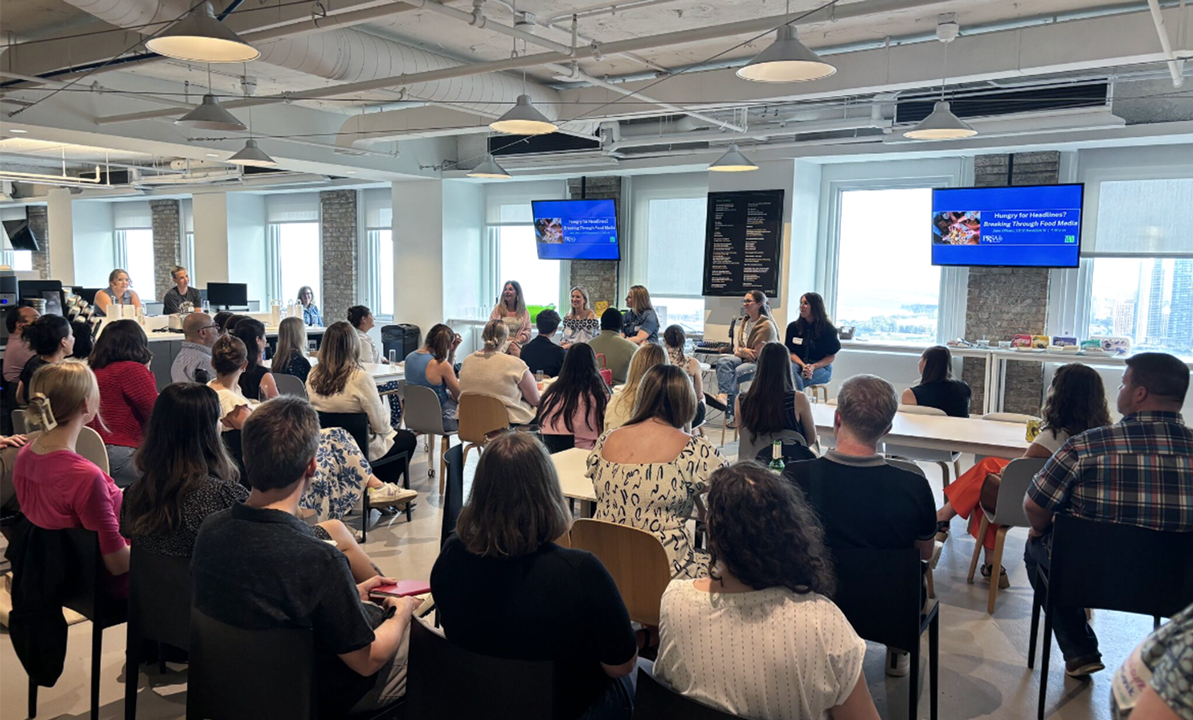By Jin Lee, Assistant Account Executive and Pavitra Reddy, Assistant Account Executive
Last week, MSL had the pleasure of attending PRSA Chicago’s “Hungry for Headlines? Breaking Through Food Media” panel. The panel provided valuable insights as these leaders shared their wisdom on navigating the intricate world of media relations, specifically in the food industry. Here are a few highlights that we found particularly enlightening:
-
Know Your Brand: While enterprise brands have wide consumer affinity, campaigns are more likely to be viewed under a microscope and “called-out” for inauthentic messaging or experiences. With lesser-known brands, agency partners must constantly remind media of the brand holistically and highlight the product on a foundational level. This also allows for more agility to meet people where they are by tapping into pop culture and current events. Intentional brand partnerships and collaborations can also elevate brands and crosspollinate audiences to mutually benefit both brands. All brands should consider their current level of public awareness to create authentic brand activations that tie back to their brand purpose. Lastly, develop an internal process for how a brand can best react to cultural moments, especially when it's necessary to move quickly and multiple approvals may be needed!
-
Pitch Concisely: Keep it short and sweet – pitches should be under 150 words and easily digestible for the consumer. In your pitch, offer solutions to consumer pain points or offer an alternative to an existing solution. Create an interesting subject line – panelists previously found success in using trending headlines as their subject. Always have a follow-up angle ready, such as unique data or creative assets that journalists can’t find elsewhere. When pitching non-food media, try to find relevance within the industry. Look for recent coverage from the reporter with overlapping themes and angles for relatability. For evergreen pitches, try to tailor the content and make it as media-ble and timely as possible. Always avoid using sales language and be open to picking up the phone to talk live! Lastly, building genuine and ongoing relationships with top media targets is crucial.
-
Adapt to the Media Landscape: Communicators should always be aware of the current news landscape and cultural context. For example, with the upcoming election, brands should steer clear of activations around November and other critical dates. Even brands known for engaging in political discourse should exercise caution. As communications practitioners turn to AI for ideation, measurement and even execution of campaigns, ensure that all AI use remains genuine to the brand. Panelists suggested utilizing chatbots to craft prompts to provide feedback from a consumer’s point of view during brainstorming sessions and involve legal teams to navigate the nuances of these topics.
As social media food trends and buzzy product announcements cycle through our feeds, the driving insight behind food media success is simple – all food tells a story, and at MSL, our work keeps consumers connected to the food brands they love.
